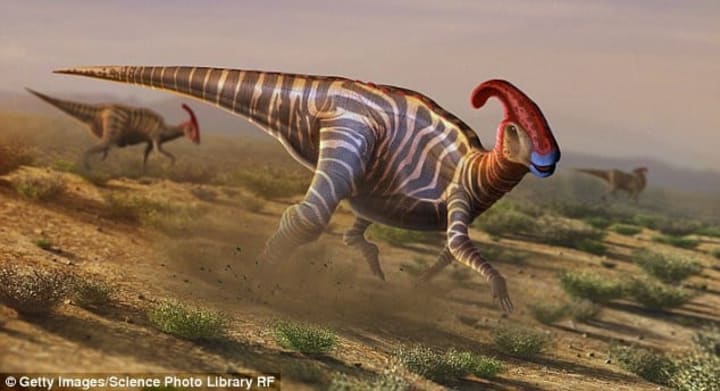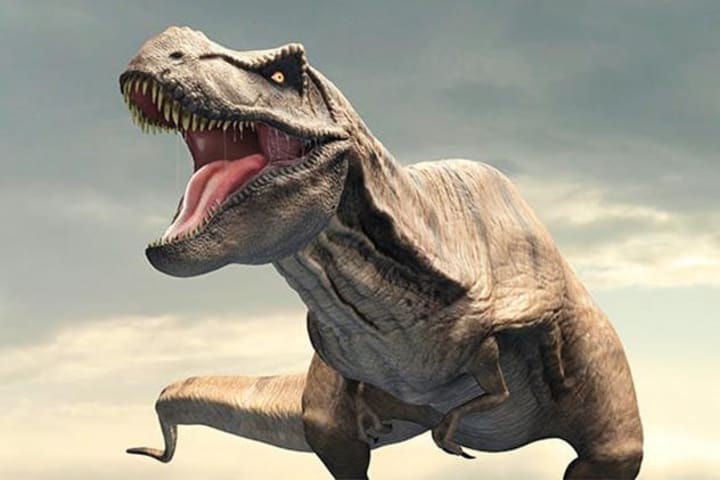
Dinosaurs are a popular pop culture favorite and it's easy to understand the reason. They fought epic battles using teeth, horns, and claws that were more dangerous than any weapon. They were crazier and more bizarre than any creature imagined in a fantasy.
They were real. We've been blessed with the regret (or perhaps luck) of being a bit behind by 65 million years. Therefore, we only see the real dinosaurs through glimpses. The glimpses can be too obscure or bizarre that they aren't incorporated into the pop culture representation of life in the past.
Dinosaurs were smothered in dandruff.

Feathered dinosaurs shed huge amounts of dirt. An interesting and gross fact that proves that dinosaurs did not shed their skins as an old suit as lizards do. Instead, dinosaurs shed their skins part by piece as dandruff.
It is believed that the Middle Jurassic period experienced an increase in feathered dinosaurs which later evolved into birds. Dandruff developed alongside feather development, as fossil feathers were covered in skin flake. Birds of today also flake. However, flaked feathers are fatty and serve as a cooling mechanism that absorbs heat and then disperses it in flight.
Dinosaurian dandruff looks similar to that of birds as well as humans. It's made of keratin, the strong, fibrous protein that produces hair, horns, and hooves. The dino-dandruff, however, is devoid of fat, which indicates that the creatures it was bred by weren't in a position to fly. Dandruff is an unlikely companion that shows what prehistoric animals could have taken to the skies.
Mother dinosaurs established birthing colonies resembling those of birds.

Dinosaurs do not get much praise for their sociability. Imagine a colony of nesting dinosaurs banding together to protect their newborn babies who aren't born, as the birds they'd later transform into.
This touching photo was painted by an 80 million-year-old set of clutches discovered in the Gobi desert. The find contained 15 clutches that totaled fifty eggs. The long-ago flood that effectively preserved them left a relic, the continuous streak of red sediment that runs across the eggs. This ties these eggs to the exact period of nesting.
Theropods (raptor-like dinosaurs) involved were showing a birthing ritual that is popular with today's birds and crocodiles. However, dinosaurs did it long prior to the split in evolutionary time (aided by an asteroid) that produced birds.
In the end, it appears that communal parenting performed as well as it does today. Over half of nests had at the very least the possibility of a successful egg, which is on the same level as crocodilian and bird hatching rates.
The most ludicrous dinosaurs were also the strongest.

The crest-headed, duck-billed, and wasp-backed herbivores called hadrosaurs are extremely prevalent among fossils with skin. Hadrosaur skin (actually the fossilized impression) remains preserved much more frequently and more abundantly than other skins.
Two explanations were given. Perhaps hadrosaurs were found living near rivers, which is why they were more likely to get covered in sediment and eventually become fossils. Perhaps they were more abundant. However, they are everywhere. They're also abundant in skin-retaining fossils of the species are discovered even though they're outnumbered by other species.
Researchers came up with a novel explanation: the hadrosaurs had the toughest skin of any. A study examined over 200 articles from the 1840s to the year 2010. It discovered that among the dinosaur fossils that had skin, nearly half (57) were hadrosaurids.
Another study focused on fossils that were found in the Hell Creek Formation. Of the 22 fossilized dinosaurs which showed skin, 20 were hadrosaurian family members. Of all the specimens examined, one even contained "enough skin to wrap around a car."
T-Rexes were too sluggish to chase you.

With its claimed Olympic sprinter-like speed, the T-Rex can outrun and slay almost any animal. Except for the (slightly) faster-than-average human runner, that is.
Researchers looked at over 500 different species that included whales to find out how size is related to speed. The most important factor in biology is oxygen, or more precisely the absence of it. Running is an aerobic exercise, and the oxidation of fuel sources isn't happening at a sufficient speed to sustain it for long. Larger animals use up their capacity to oxidize fuels even more quickly.
Previous scientific research indicated that Tyrannosaurus had a terrifying top speed of 45 mph, but its size could limit it to a slow trot at most. The new, more precise top speed? It's a moderate 16.5 miles/hour. This isn't too scary when you consider the average human could reach speeds of 15 miles per hour in sprints.
Some dinosaurs were really tiny.

Many of the most stunning dinosaurs were also among the ones with the smallest size. One of them, discovered in a 99 million-year-old Mesozoic fossil found in Myanmar, is thought to be the tiniest dinosaur ever.
It's a tiny teacup dinosaur called Oculudentavis Khaungraae. Researchers have only found its head, which was decapitated and kept in resin. What's next? It's just half-an-inch long and hummingbird-like but smaller than a modern hummingbird.
It's poised to cross the edge between the past of the saurians and the future of the bird. It has eyes that resemble lizards, which suggests that it was active throughout the daytime. However, it also has teeth in its mouth that resemble the teeth of a dinosaur. The combination of characteristics makes this small bird-o-saur a missing link connecting birds and dinosaurs.
Khaungraae is also an example of how dinosaurs survived for over 150 million years. They utilized every strategy of adaptation, including shrinking and making use of resources feared by their huge cousins.
Feather-eating parasites tormented dinosaurs.

Feathered dinosaurs could be constantly preening themselves like birds to get rid of the parasites eating feathers.
It's a tale that's as ancient as history: when space is created and evolves, it creates a new product to fill the gap. Most often, it's at another's cost. When dinosaurs grew feathers, they were soon plagued by lice-like bugs who ate their feathers.
These bugs are so small, delicate, and fragile that they rarely form fossils. From thousands of amber specimens, researchers just recently discovered lice trapped within 100 million years old Burmese amber.
In the amber, there were two feathers from a dinosaur. They appeared to have been chewed. In a closer examination, scientists discovered 10 bugs from the past and identified them as Mesophthirus Engeli. The Mesozoic feather-munchers are only around two hair widths long, likely because they were infants or nymphs. The adults, however, wouldn't be much bigger, perhaps 02 inches in length.
Dinosaurs did not live in every corner of the world.

Dinosaurs appeared everywhere. They controlled every inch of the Earth and subjugated the mammalian ancestral ancestors. However, for 30 million years after their appearance (240 million years ago), dinosaurs were not capable of settling on the Equator.
A small but select meat-eating population was capable of residing in the lower latitudes. Researchers have mapped the ecosystem of the past through the levels of carbon in the soil and plant life, as well as the variety of flora and charcoal and fossil evidence.
It was discovered that the Equator was hell on Earth. The wild climate swings rumbled between the two poles, taking moisture away and turning fertile climes into a deserted wilderness. The extreme heat led to extreme droughts and wildfires. The fires swept the land clean and damaged the soil and caused more erosion, leaving no land for the enormous sauropods, herbivores, with long necks, who ruled other latitudes.
This view of the past could also be a glimpse into the future. The atmospheric CO2 levels were five to six times the level of the present. The mid-latitudes of the globe resembled the scorched, sun-baked west of the US. Given the dearth of materials, the tiniest and most thrifty dinosaurs could live close to the edge of the equator.
Winding-up
I have shared some facts about the dinosaurs. I hope you all loved reading this article. If you liked this article, do share this article with your friends and family. You are all caught up.
About the Creator
Enjoyed the story? Support the Creator.
Subscribe for free to receive all their stories in your feed. You could also pledge your support or give them a one-off tip, letting them know you appreciate their work.





Comments
There are no comments for this story
Be the first to respond and start the conversation.